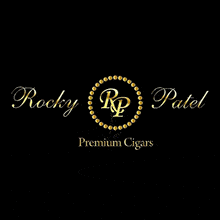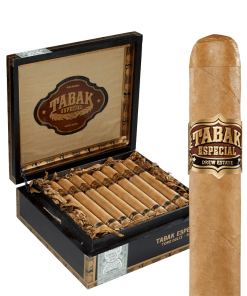RYO LifeStyle Blog
FDA Ban on Flavored Cigars
Why Did The FDA Ban Flavored Cigars?
The Food and Drug Administration (FDA) recently made an announcement pertaining to its plan to advance the prohibition of all flavored cigars in the United States. In April 2021, the agency announced that it is advancing its commitment towards enforcing a ban on all characterizing flavors in cigars within the next year, alongside a ban on menthol cigarettes.
The essence of these enforcements is to significantly reduce mortality and morbidity by saving lives and preventing future generations of smokers in the United States.
This decision, according to the agency, is based on clear science and evidence establishing the addictiveness and harm of these products and builds on important, previous actions that banned other flavored cigarettes in 2009. This announcement was also made in response to the public uproar against the racially disproportionate demographic of tobacco product consumers resulting in disproportionate death rates in different communities.
The FDA has, thus, making this decision to employ its Congress-delegated power to regulate product standards and begin working towards enforcing yet another ban.
After the 2009 statutory ban on flavors in cigarettes other than menthol, the use of flavored cigars increased dramatically because the flavors in these tobacco products made them even more appealing to young people. This suggested that the public health goals of the flavored cigarette ban may have been undermined by the continued availability of these flavored cigars.
Flavored mass-produced cigars and cigarillos are combusted tobacco products that can closely resemble cigarettes, and they pose many of the same public health problems and are disproportionately popular among youth and other populations. In 2020, non-Hispanic Black high school students reported past 30-day cigar smoking at levels twice as high as their White counterparts.
Nearly 74% of youth aged 12-17 who use cigars say they smoke cigars because they come in flavors they enjoy. Among youth who have ever tried a cigar, 68% of cigarillo users and 56% of filtered cigar users report that their first cigar was a flavored product. Moreover, in 2020, more young people tried a cigar every day than tried a cigarette.
Thus, the rationale behind the ban is to eradicate this spike in the number of American smokers who have been propelled into the habit as a result of the amplified addictiveness of cigars through flavoring. In addition, the FDA is also working to build on its Tobacco Control Act (TCA) which previously banned all other flavors in cigarettes and was enforced back in 2009.
The FDA also remains focused on its regulatory oversight of menthol cigarettes, e-cigarettes, and other electronic nicotine delivery systems (ENDS). The agency has recognized that US smokers’ reactions to a hypothetical ban would involve about 15-30% of smokers switching to e-cigarettes, hence the purported need for regulation in that area as well.

Reasons Why the Ban Is Being Pushed towards Enforcement
1. Smoking remains one of the biggest reasons behind high mortality and morbidity in America: The ban is thus aimed at a decrease in the death rate as a result of lung cancers and other respiratory conditions that are caused by smoking.
2. The disproportionate vulnerability of minority populations: Racial minorities, youth, and young adults have been revealed, through studies, to be the most affected groups in the preponderance of smoking addictions that exist in America. Hence, yet another reason for the ban is to solve this disproportionality.
3. The hope that more lives will be saved: There are existing claims backed up by studies that the enforcement of this ban by the FDA will help to save more American lives. In the end, the goal is that, over time, the ban will help end the cycle of children becoming the next generation of smokers and eliminate long-perpetuated health disparities.
A limitation in the ban, however, does exist such that the FDA cannot and will not enforce any new regulations against individual consumer possession or use of any tobacco product. The ban will only address and regulate manufacturers, distributors, wholesalers, importers, and retailers.
Expert evaluation has revealed that the implementation of this ban will not be easy and will not come any time soon either. Predictions have been made that the entire process may take a span of between 18 months to 3 years. The reasons for this include:
- The FDA could take up to a year to draft the rule.
- The regulation will be subject to public hearings, debate, testimony, and all the other delegated law-making processes in force in the United States.
- The tobacco industry will certainly find a way to counteract the law, most likely through legal action.
Furthermore, despite all of the objectives and rationale behind it, the ban may easily just end up prompting current smokers to transition to an alternative tobacco or nicotine product. The response of manufacturers, distributors, and sellers to the ban is unclear. The industry, however, may attempt to circumvent the ban through the introduction of similar, but not banned products, such as the introduction of clove cigars following the US flavored cigar ban.
The bans may also result in the rise of a black market for the banned product. Regardless of these limitations, the American Medical Association is strongly supporting the ban, calling on the Food and Drug Administration to “prioritize enforcement action” against flavored cigars and menthol cigarettes.
And based on numerous studies, it has been estimated very reliably that the flavored cigar ban will have substantial impacts on smoking cessation and initiation. The impacts are expected to be greater if compliance with the ban is high and if e-cigarettes, especially those that are menthol and mint-flavored, are available.
While a lot of research has considered the impact of flavor use on initiation and cessation, further studies should consider the effects of flavored cigarette and cigar bans that have already been implemented in local areas of the US, paying particular attention to smoking initiation, the role of e-cigarettes, and compliance.
Nevertheless, the evidence to date indicates that a flavored cigar ban, especially if implemented nationally, provides an important opportunity to improve public health by reducing smoking-attributable diseases.
Top 5 Flavored Cigars to Try Now that Their Distribution Is Still Legal!
If you’ve never tried a flavored cigar before learning about the ban, here are the top 5 flavored cigars to sample today:
1. JAVA by Drew Estate Cigars

Drew Estate JAVA Cigars are a collaboration between Drew Estate and Rocky Patel Cigars. They have hit a home run producing a very complex, well-balanced cigar. Drew Estate JAVA Cigars are a multifaceted blend of Nicaraguan tobacco infused with espresso, chocolate, and notes of dark coffee beans. A dark Brazilian wrapper releases additional tones of sweet cocoa while keeping a smooth creaminess on the finish.
The aged Nicaraguan tobacco has been fermented to exactness, releasing fragrant aromas. These are a range of relaxing cigars that can be enjoyed with your morning coffee or as an after-dinner dessert cigar while you unwind in your easy chair. They include JAVA Latte and JAVA Mint.
2. Tabak Especial Cigars

Another one of the Drew Estate frat brothers’ masterpieces, Tabak Especial is a coffee-flavored cigar available in a Natural or Maduro wrapper leaf. The Natural version, called Dulce, delivers a creamy and easygoing profile of blonde roast coffee, cocoa, caramel, and a hint of vanilla. An Ecuador Connecticut wrapper covers a core of Nicaraguan long-fillers.
The Maduro version, Negra, is finished in a Connecticut Broadleaf wrapper that resonates with notes of mocha, hazelnut, and espresso. Sweet and silky aromas fill the room whenever you light up any of the cigars from the Tabak Especial line.
3. CAO Flavours

CAO Flavors covers the bases with a collection of five distinct profiles. Moontrance is the most popular blend with an exotic profile of bourbon and sweet fruit. Bella Vanilla delivers straight-up vanilla flavors with a touch of pepper. Notes of black currant and cherry meld in Cherry Bomb. Fans of Irish crème adore Eileen’s Dream for its creamy flavors of white chocolate liquor.
Notes of honey and orange layer the palate with Gold Honey. CAO Flavours are handmade in the Dominican Republic and come in pocket-friendly tins.
4. Nub Nuance

Coffee-flavored cigars are among the most popular kind of flavored cigars and Nub is one of the brands that produce them. Their cigars are best known for the short fat shapes in which they are rolled. Nub Nuance is the brand’s coffee-flavored line. There are three different coffee-flavored blends to choose from Cappuccino (Single Roast), Macchiato (Double Roast), and Espresso (Triple Roast).
Each blend is handcrafted in the bestselling Nub sizes. Sweet and milky notes of coffee, mocha, caramel, vanilla, and cocoa characterize Nub Nuance cigars. The nub is handmade at the Oliva factory in Estelí, Nicaragua.
5. Isla del Sol by Drew Estate

Isla del Sol is a budget-friendly coffee-infused brand from Drew Estate. A Sumatra wrapper covers a Cuban-sandwich blend of Nicaraguan tobaccos in a handful of classic shapes. Tasting notes of fresh coffee and mocha accompany hints of caramel and pepper. Isla del Sol delivers sweet flavor and aroma at very affordable prices.
Rocky Patel Java Toro
Rocky Patel Java Robusto
Rocky Patel Java Petit Corona Natural Cigars (4 1/2 x 38) – Box of 40
Rocky Patel Java Robusto
Rocky Patel Java Robusto Mint Cigars (5 1/2 x 50) – Box of 24


















